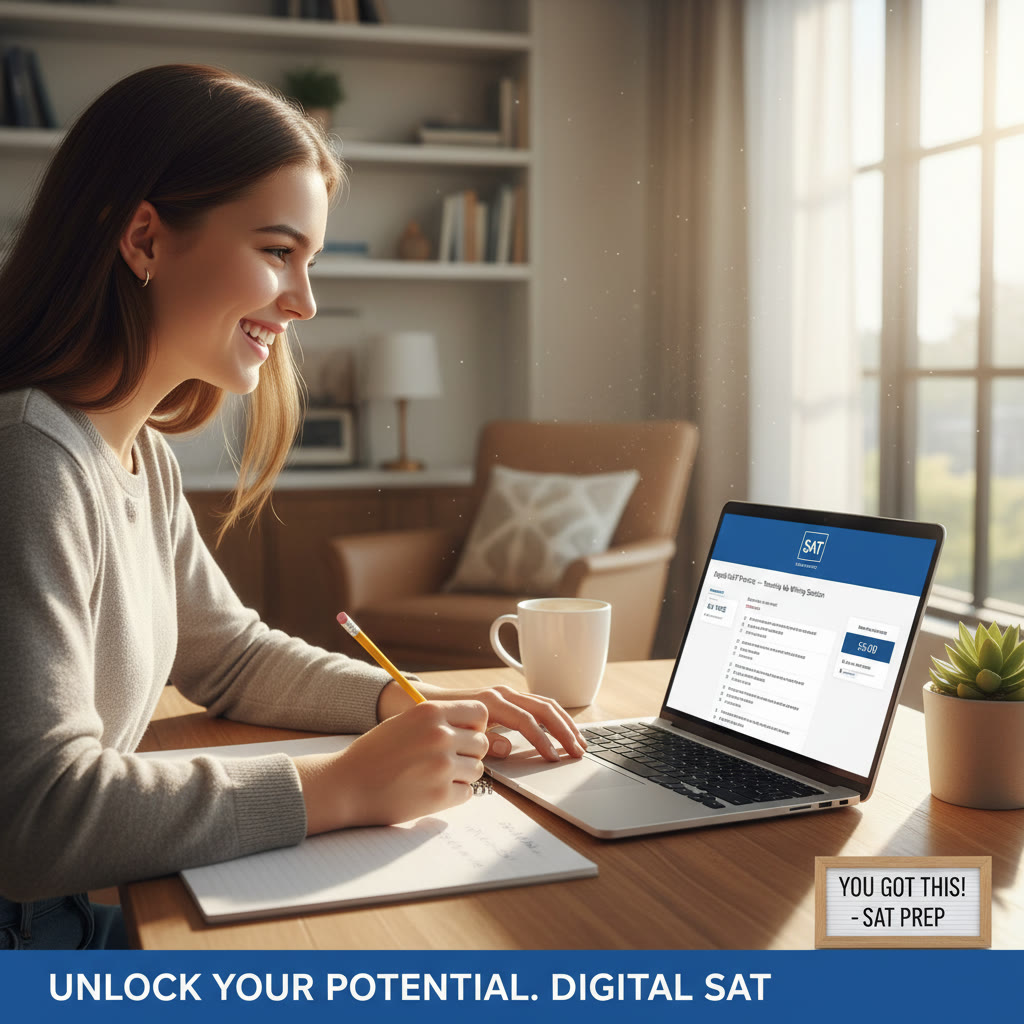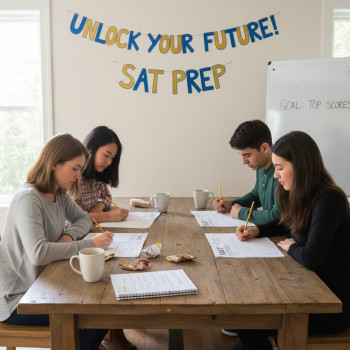Intro: Why this matters now — and why you’re in the right place
Applying to the University of California, San Diego (UC San Diego or UCSD) is exciting, nerve-wracking, and a little bewildering — especially when it comes to testing. Over the last few years, colleges have changed how they use SAT scores. Some schools require them, some are test-optional, and others only use scores for placement or scholarship decisions. That shifting landscape has created a lot of questions for students and parents: should I take the Digital SAT? If I do, should I send my scores? How will SAT scores affect admission, scholarships, or course placement at UCSD?
This guide answers those questions in a clear, practical way. We’ll walk through UCSD’s current stance on the SAT, how to evaluate whether submitting scores will help you, how the Digital SAT differs from the older paper test, and concrete study and decision-making strategies you and your family can use. I’ll also point out where targeted help — like 1-on-1 guidance, tailored study plans, expert tutors, and AI-driven insights from Sparkl — can make a real difference.

What UC San Diego expects: the short version
At present, UC San Diego does not require SAT or ACT scores for undergraduate admission. That means students are generally not required to submit test scores as a part of their UC application. However, submitting a strong SAT score can still be advantageous in specific situations — for example, when a score strengthens an otherwise borderline application, or when a student is aiming for certain scholarship or program options that consider standardized test data.
Because university policies can evolve from year to year, it’s wise to check UCSD’s admissions pages or your counselor for updates for the specific application cycle you’re targeting. The policy above, however, reflects the current landscape: standardized tests are neither required nor universally recommended as part of the application.
How to decide whether to submit your Digital SAT score to UCSD
This is the central, practical question. A one-size-fits-all answer doesn’t exist — but here’s a decision framework you can use with concrete examples.
Step 1 — Compare your score to UCSD’s typical admitted range
If your SAT score is at or above the median range for admitted students at UCSD, the score can strengthen your application. If it’s below that range, it might not add value and you could choose not to submit it.
Step 2 — Think about the rest of your application
- If you have an exceptional GPA, rigorous coursework (AP/IB/honors), strong recommendations, and meaningful extracurriculars, you may not need a test score to demonstrate readiness.
- If your transcript or circumstances don’t fully reflect your academic potential — for example, if illness or a school move affected senior-year grades — a strong SAT score can provide additional evidence of your preparedness.
Step 3 — Consider scholarships and program requirements
Some scholarships, honors programs, or certain major selection processes may still use SAT scores in consideration or as a tiebreaker. If you’re applying to honors programs at UCSD or competitive scholarships, confirm directly with those programs whether scores are used.
Step 4 — Use placement and course planning information
Even when tests aren’t used for admission, universities sometimes use SAT scores for course placement (e.g., math sequence placement) or to advise registration. If a departmental placement benefit matters to you — for instance, avoiding an extra semester of remedial math — that could influence your decision to submit scores.
What the Digital SAT means for UCSD applicants
The SAT transitioned to a digital format in recent years. While the content and scoring have evolved, the core purpose remains the same: to give colleges a standardized measure of college readiness in math and evidence-based reading and writing.
Key practical differences that affect preparation and submission choices:
- Timing and pacing: The digital SAT is organized differently, with shorter modules and adaptive elements — preparation should reflect those timing changes.
- Test-day logistics: You’ll need to be comfortable with the test platform, typing longer responses in some sections, and possibly using a laptop or tablet for the exam.
- Score reporting: Colleges, including UCSD, receive scores in the same way they did for the paper test — but how they interpret them should be contextualized within the shift to the digital format.

When submitting SAT scores helps — real examples
Here are three real-world, anonymized scenarios that illustrate when submitting an SAT score to UCSD can help.
- The academic booster: Maya has a 3.7 unweighted GPA with several AP classes but attends a school where traditional grade inflation is low. Her Digital SAT score sits comfortably in the upper quartile of UCSD applicants. Submitting the score shows standardized academic strength and reinforces her competitiveness.
- The comeback story: Jamal’s junior year was disrupted by family illness, and his senior-year transcript shows strong upward trends but overall slightly lower grades. He earned an above-average SAT score after dedicated prep; submitting it highlights his true academic potential.
- The placement advantage: Priya is confident academically but wants to place into a higher-level calculus course to maintain momentum in her major. Submitting her math score could earn her favorable placement, saving time and tuition.
When you can skip submitting SAT scores
There are also valid reasons not to send scores. If your score is below the middle range for UCSD and your application already shines through GPA, coursework, and extracurriculars, omitting scores avoids drawing focus to a weaker metric. Likewise, if your intended major or scholarship application explicitly states scores won’t be considered, you can safely skip them.
Study plan: How to prepare for the Digital SAT strategically (8–12 week plan)
Whether you decide to submit scores or are preparing just in case, a structured study plan helps. Below is a flexible 8–12 week schedule with milestones and practical tasks.
| Weeks | Focus | Key Activities |
|---|---|---|
| 1–2 | Baseline & Planning | Take a full-length official Digital SAT practice test; identify strengths/weaknesses; set target score; build daily practice calendar. |
| 3–5 | Skill Building — Math & Reading | Work on weak content areas (algebra, geometry, data analysis, reading comprehension); practice with timed modules; review foundational concepts. |
| 6–8 | Technique & Timing | Drill adaptive timing strategies, practice with question sets; learn digital tools (highlighting, flagging); take mid-plan full test. |
| 9–10 | Targeted Practice | Polish weakest question types; review incorrect answers thoroughly; simulate test-day conditions; finalize test-day checklist. |
| 11–12 | Final Prep & Rest | Take one last full practice test early in the period; taper study intensity; prioritize sleep, nutrition, and mental readiness before test day. |
Study tools and daily tasks
- Official practice tests and question banks (use them early to get realistic baselines).
- Daily 30–60 minute targeted practice sessions (math or reading, alternating).
- Weekly full-length practice under timed, digital conditions.
- Regular review sessions focused on error patterns, not just volume.
How Sparkl can help — where personalized tutoring fits
Preparing for a top public research university like UCSD is more than test scores; it’s a holistic process. Targeted tutoring can amplify strengths and shore up weaknesses much faster than self-study alone. Here’s how Sparkl’s personalized tutoring can fit naturally into your plan:
- 1-on-1 guidance to craft a study calendar tailored to your school schedule, extracurricular commitments, and target majors.
- Tailored study plans focusing on your specific weak question types and pacing needs — so you practice smarter, not just longer.
- Expert tutors who know the Digital SAT format and can teach digital test-taking strategies, time management, and problem-solving shortcuts.
- AI-driven insights that track your progress, highlight persistent mistakes, and adapt study focus over time.
For many students, working with a tutor for targeted weekly sessions (plus on-demand review of practice tests) can convert plateaued practice into measurable score gains — and increased confidence on test day.
What admissions officers at UCSD read besides test scores
Remember: UCSD looks at your application holistically. Here’s what tends to matter most:
- Academic performance in context: course rigor, pattern across years, and any mitigating circumstances.
- Personal insights and essays that show intellectual curiosity, leadership, resilience, and a fit with UCSD’s research-oriented, collaborative culture.
- Extracurricular depth: sustained commitment, impact, and evidence of leadership or unique contributions.
- Contextual factors such as school resources, family background, and opportunities available to you.
Frequently asked practical questions
Q: If UCSD is test-optional, why take the SAT at all?
A: Taking the SAT keeps options open. A strong score can bolster applications, support scholarship eligibility, or help with placement. It’s insurance: submit if the score helps, skip if it doesn’t.
Q: Can SAT scores be used for placement at UCSD?
A: Many universities use standardized test results for placement considerations. If placement into a higher-level course matters to you, confirm UCSD’s current placement policies; a solid math score can sometimes move you into a more advanced sequence.
Q: Will submitting scores ever hurt my application?
A: No — colleges that are test-optional won’t penalize you for not sending scores. If you submit a low score, admissions officers will view it in the full context of your application. If a low score would distract from stronger elements, it may be better withheld.
Q: How many times should I take the Digital SAT?
A: Many students take the test 1–3 times. The first attempt gives a baseline; subsequent attempts allow targeted improvement. Balance the benefits of retesting against application timelines and test fatigue.
Putting it together: an example timeline for a typical senior
Here’s a suggested timeline that coordinates Digital SAT prep, application deadlines, and strategic decision points.
- Spring of Junior Year: Take a PSAT/NMSQT and an initial Digital SAT practice test to set your baseline.
- Summer after Junior Year: Begin a structured 8–12 week Digital SAT prep plan if you aim to submit scores; consider working with a tutor for targeted gains.
- Fall of Senior Year (Sept–Oct): Take an official Digital SAT if you want to have scores ready for early scholarship or honors program decisions.
- November–December: Apply to UCSD by the regular UC deadline; decide whether to submit SAT scores based on your strongest official results and the rest of your application.
- Winter–Spring: If you didn’t submit scores or want improvement, take another official test (if the calendar allows) and submit updated results if they strengthen your application for scholarships or placement.
Sample checklist: Before you register for the Digital SAT
- Confirm the official test dates and registration deadlines on the SAT platform.
- Check UCSD deadlines and whether specific scholarship programs require scores.
- Take one full, timed official practice test to set a baseline.
- Create a study schedule with realistic daily/weekly commitments.
- Decide if targeted tutoring (e.g., Sparkl) is the right fit for your timeline and budget.
- Plan two test dates: one to get a baseline and the other as a final, polished attempt.
Final thoughts: Embrace strategy and calm
Admission to UC San Diego is competitive, but the path to a strong application is clear: focus on academics, communicate who you are through essays and activities, and use test scores only when they strengthen your case. The Digital SAT is a tool — powerful in the right hands, unnecessary in others. Make the decision that’s best for your narrative.
If you and your family want a structured, personalized approach — whether that means crafting a study calendar, targeting weak content areas, or learning digital test-taking strategies — Sparkl’s 1-on-1 tutors, tailored study plans, and AI-driven insights can help you study efficiently and confidently. That kind of targeted support can turn ambiguity into a clear plan: practice with purpose, test with confidence, and apply with conviction.
Resources to keep close (check regularly)
Policies evolve. Keep these routines in your weekly checklist:
- Confirm UCSD admissions policies for the application year you’re applying.
- Check deadlines for the UC application and any UCSD-specific scholarships or honors programs.
- Schedule practice tests at regular intervals and review results with a tutor or counselor.
Parting reassurance for students and parents
Applying to UCSD is a marathon, not a sprint. The best strategy combines steady academic work, thoughtful storytelling in your application, and—if helpful—targeted preparation for the Digital SAT. Whatever path you choose, remember that there are many routes to a successful UCSD application. Use your test score as one piece of a bigger story that shows who you are and what you’ll bring to campus.
Good luck, and if you want a tailored plan or a practice review that zeroes in on what will move your score most, consider setting up a short diagnostic with a Sparkl tutor. A few sessions might be all you need to turn uncertainty into confidence.
Ready to take the next step? Start with an honest practice test, build a realistic schedule, and use targeted help where it matters most. UCSD is looking for your best — and the best version of your application is one that tells your story clearly and confidently.


















No Comments
Leave a comment Cancel